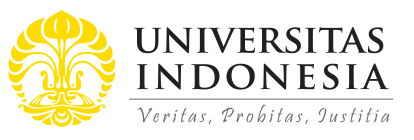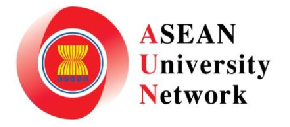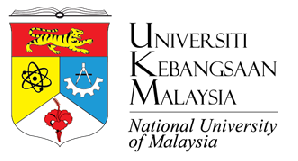
Abstract
This paper highlights the formulation of dragon fruit waste material for a solid body wash, which arguably contain better substance for skin health. The result of this experiment opens up a possibility to be applied as part of community project, contributing to sustainable environment and healthier lifestyle. Red dragon fruit (Hylocereus polyrhizus) is a plant originating from a dry tropical climate with a fairly thick peel that accounts for 30%–35% of the fruit’s total weight. The peel is rarely used or reprocessed and thus often becomes waste. The peel’s polyphenol and other important substances component makes it rich in antioxidants. Owing to these contents, dragon fruit peel is a suitable ingredient for making bath bar soap. In this study, pandan leaf extract was used as an additive as its contents help increase antioxidant levels in solid body wash. This study aimed to determine the best bar soap formulation using dragon fruit peel and pandan leaf extract and the most effective method (FTC versus DPPH), as well as moisture content and pH levels analysis. Results showed that the samples with dragon fruit peels have the highest moisture content, pH, and antioxidant activity. In conclusion, dragon fruit peel can be reused as a supporting ingredient in bar soap. Dragon fruit peel and pandan leaf extract are highly effective for increasing the antioxidant activity and consequently improve the quality of solid body wash.
References
Ayun, Q. (2019). Formulasi sabun mandi padat dari ekstrak limbah kulit buah naga merah (Hylocereus costaricensis). Jurnal Biosense, 2(01), 18–27. https://doi.org/10.36526/biosense.v2i01.357
Badan Standar Nasional. (1994). Sabun mandi. SNI 06-3532-1994.
Badan Standar Nasional. (2016). Sabun mandi padat. SNI 3523:2016.
D12 Committee. (2016). Guide for pH of Aqueous Solutions of Soaps and Detergents. ASTM International. https://doi.org/10.1520/D1172-15
Dewi, N. P. B. T., Singapurwa, N. M. A. S. & Mangku, I G. P. (2020). Extraction and stability of natural dyes from the skin of red dragon fruit. SEAS, 4(2), 130–141. https://doi.org/10.22225/seas.4.2.2622.130-141
Hennessey-Ramos, L., Murillo-Arango, W., & Guayabo, G. T. (2019). Evaluation of a colorant and oil extracted from avocado waste as functional components of a liquid soap formulation. Revista Facultad Nacional de Agronomía Medellín, 72(2), 8855–8862. https://doi.org/10.15446/rfnam.v72n2.74573
Jamilah, B., Shu, C. E., Kharidah, M., Dzulkifly, M. A., & Noranizan, A. (2011). Physico-chemical characteristics of red pitaya (Hylocereus polyrhizus) peel. International Food Research Journal, 18(1), 279–286.
Madane, P., Das, A. K., Nanda, P. K., Bandyopadhyay, S., Jagtap, P., Shewalkar, A., & Maity, B. (2020). Dragon fruit (Hylocereus undatus) peel as antioxidant dietary fibre on quality and lipid oxidation of chicken nuggets. Journal of Food Science and Technology, 57, 1449–1461. https://doi.org/10.1007/s13197-019-04180-z
Moon, J. K., & Shibamoto, T. (2009). Antioxidant assays for plant and food components. Journal Agriculture Food Chemical, 57(5), 1655–1666. https://doi.org/10.1021/jf803537k
Muhtadi, Hidayati, A. L., Suhendi, A., Sudjono, T. A., & Haryoto. (2014). Pengujian daya antioksidan dari beberapa ekstrak kulit buah asli Indonesia dengan metode FTC. Simposium Nasional RAPI XIII, 50–58.
Plongpaichit, S., Nikom, J., Rungjindamai, N., Sakayaroj, J., Hutadilok-Towatana, N., Rukachaisirikul, V., & Kirtikara, K. (2007). Biological activities of extracts from endophytic fungi isolated from Garcinia plants. FEMS Immunology and Medical Microbiology, 51(3) 517–525. https://doi.org/10.1111/j.1574-695x.2007.00331.x
Setiawati, I., & Ariani, A. (2020). Kajian pH dan kadar air dalam SNI sabun mandi padat di Jabedebog, Pertemuan dan Presentasi Ilmiah Standardisasi, 293–300. https://doi.org/10.31153/ppis.2020.78
Shinthia, M. (2016). Pembuatan sabun padat (rasio tallow – minyak kelapa – minyak jagung) [Unpublished master’s thesis]. Politeknik Negeri Sriwijaya.
Suryani, C. L., Murti, S. T. C., Ardiyan, A., & Setyowati, A. (2017). Aktivitas antioksidan ekstrak etanol daun pandan (Pandanus amaryllifolius) dan fraksi-fraksinya. agriTECH, 37(3), 271–279. https://doi.org/10.22146/agritech.11312
Thirunavukkarasu, A., Nithya, R., Sivashankar, R., Sathya, A. B., Rangabhashiyam, S., Pasupathi, S. A., Prakash, M., & Nishanth, M. (2023). Green soap formulation: An insight into the optimization of preparations and antifungal action. Biomass Conversion and Biorefinery, 13, 299–310. https://doi.org/10.1007/s13399-020-01094-1
Utami, W., Maradawati, E., & Putri, S. H. (2020). Pengujian aktivitas antioksidan kulit buah naga merah (Hylocereus polyrhizus) sebagai masker gel peel off. Jurnal Industri Pertanian, 2(1), 95–102.
Wahyuni, T. (2021). The potential and application of Eucheuma sp. for solid soap: A review. IOP Conference Series: Earth and Environmental Science, 750(1), 012048. https://doi.org/10.1088/1755-1315/750/1/012048
Recommended Citation
Siswanto, Anggun Puspitarini and Aldo, Georgius
(2023).
Formulation of Solid Body Wash From Dragon Fruit Peel Waste With Pandan Leaf Extract.
ASEAN Journal of Community Engagement, 7(1), 26-36.
Available at: https://doi.org/10.7454/ajce.v7i1.1192







